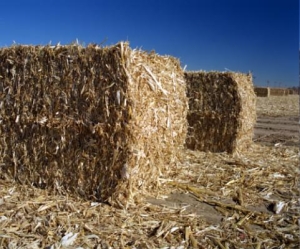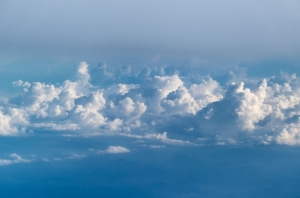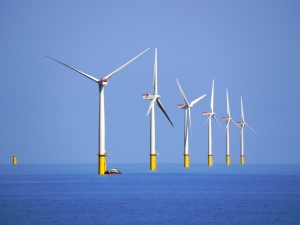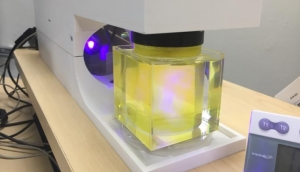LAB REPORT
Science and Technology Making Headlines
Feb. 21, 2020


Agricultural waste, resulting from crop cultivation activities, are a promising source of clean energy.
Turning waste into fuel
Renewable natural gas (RNG) is a clean fuel produced from human waste streams (i.e., sewers and food waste, as well as dairy and agricultural waste) and can be used to heat homes and businesses, for cooking and to fuel trucks and buses.
California law requires 40 percent of methane from sewage treatments plants, landfills, dairies and other agriculture to be captured, with provisions for energy delivery to customers as part of the state's ambitious plan to reduce greenhouse gas emissions.
RNG can take more carbon out of the air than it emits as an energy source, which makes it a carbon negative fuel. Last month, Lawrence Livermore National Laboratory issued a report assessing pathways California can take to achieve carbon neutrality by 2045.
The study found the pathway that holds the greatest potential for removing emissions from the atmosphere is to convert waste to fuel, with simultaneous capture of CO2 emissions. Estimates show this pathway could remove 83 million tons of CO2 per year.


Thinning clouds in a warmer world could further amplify climate change.
Out of thin air
Clouds play an important role in keeping the Earth warm and cool — some types of clouds shade the planet from sunlight while others help retain heat.
Greenhouse gases are changing the amount of heat that is trapped in the atmosphere, and a new study finds that as the planet warms clouds will become thinner, which could reduce the amount of sunlight that is reflected away from the warming planet.
The study, led by Mike Zelinka, a researcher at Lawrence Livermore National Laboratory, tested 30 new computer models to simulate Earth’s changing climate. When the concentration of atmospheric carbon dioxide is doubled, the average global temperature increases by 3.9 degrees Celsius. This value is considerably higher than previous calculations made — which were closer to 3.2°C. Beyond that, the researchers also found that with increasing global temperatures, low clouds tend to hold less water and at the same time decrease in extension around the globe.


The Walney Extension wind farm off Britain’s east coast is a source of clean energy that American coastal states could mirror.
A CO2 free grid
Nearly two dozen states and the District of Columbia have committed to slashing greenhouse gas emissions by 2050, with several planning at least an 80 percent cut. But how big a lift will that be at the state level?
One study from Lawrence Livermore National Laboratory and the ClimateWorks Foundation found that California could mobilize investment, research and public support to remove increasing amounts of carbon dioxide from the atmosphere, helping create a carbon-free economy by 2045.
The cost was estimated at $8 billion a year, or nearly 4 percent of the proposed California budget for 2020-2021. Under less favorable assumptions, the cost could get to $30 billion annually, the study authors said.
"It was a welcome surprise to see how reasonable the costs appear compared to other studies," said Sarah Baker, staff scientist at Lawrence Livermore and lead author of the report. "We were pleased."


Like a CT scan done in reverse, the projections combine to form a 3D object that is suspended in the resin. Here, a CAL system projects light into a photosensitive resin to produce a component. Photo by Hossein Heidari/UC Berkeley
The need for speed in 3D printing
A team of Swiss researchers have demonstrated the ability to 3D print objects up to 2 cm in size in a matter of seconds.
The technology builds on earlier work developed by Lawrence Livermore scientists that casts multiple beams of light onto a vat of transparent resin, allowing for rapid production of a printed part.
LLNL researchers teamed up with collaborators from MIT, the University of Rochester and UC Berkeley to develop what they call volumetric 3D printing, which flashes laser-generated, hologram-like 3D images into photosensitive resin.
The method works by overlapping three laser beams, which define the geometry of the object being printed, from three separate directions — this creates a 3D image, which is suspended in a vat of resin. The light from the lasers has a higher intensity at the point where the beams intersect, and it is turned on for roughly ten seconds in order to cure the part. Then, the researchers drain the excess resin out of the vat to reveal a fully formed, 3D printed object.


Light shining through fiber optic cables.
Mapping an earthquake
Fiber-optic cables stretching below cities, through glaciers and along the sea floor can record earthquakes and more.
Information travels through a fiber-optic cable via pulses of laser light, most of which moves directly through the hair-thin glass threads. But inevitably a small amount hits microscopic flaws in the cable and scatters back toward the source. This reflection varies when the cable stretches or bends because of ground vibrations, such as those from an earthquake or even a passing truck, and scientists can monitor changes in the backscattered light to quantify those movements.
This technique — known as distributed acoustic sensing (DAS) — has recently infiltrated the sciences.
“Any more data about exactly how earthquakes start and nucleate could be a game changer,” said Robert Mellors, a seismologist at Lawrence Livermore National Laboratory.
But the quantity of data involved also presents a processing problem. DAS easily generates 10 terabytes a day for a single fiber-optic cable; that will add up to a petabyte in just 100 days. In comparison, the international seismological data repository — which collects all the seismological data available across the globe — contains less than a petabyte. Before scientists tap into dark fiber and deploy cables across remote areas, they will first have to learn how to store and share a colossal amount of information.





